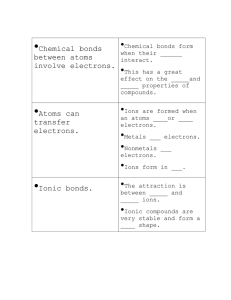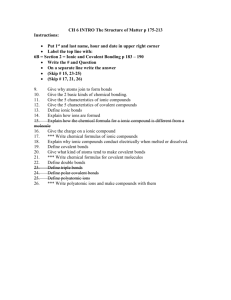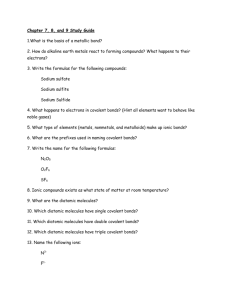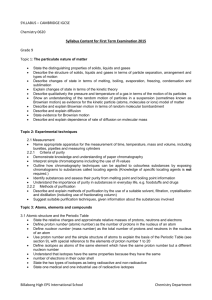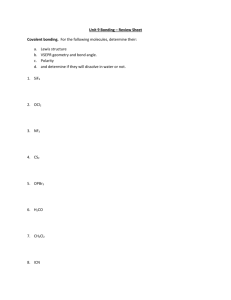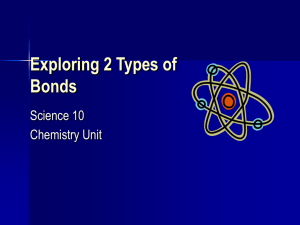Unit B4– Photosynthesis
advertisement
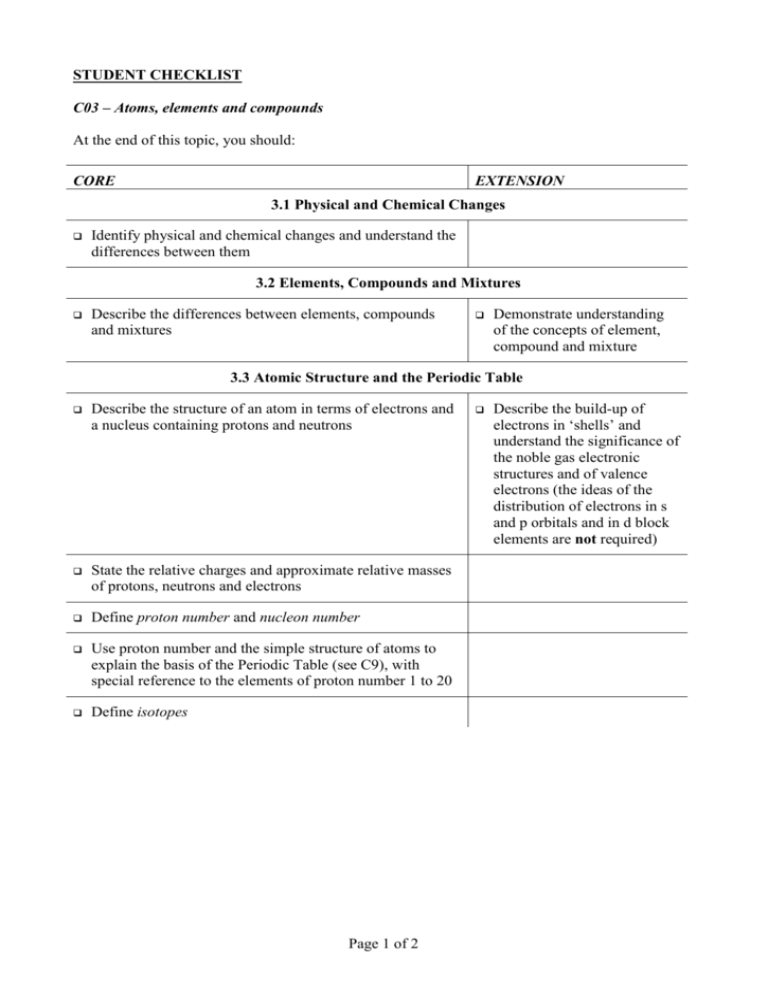
STUDENT CHECKLIST C03 – Atoms, elements and compounds At the end of this topic, you should: CORE EXTENSION 3.1 Physical and Chemical Changes Identify physical and chemical changes and understand the differences between them 3.2 Elements, Compounds and Mixtures Describe the differences between elements, compounds and mixtures Demonstrate understanding of the concepts of element, compound and mixture 3.3 Atomic Structure and the Periodic Table Describe the structure of an atom in terms of electrons and a nucleus containing protons and neutrons State the relative charges and approximate relative masses of protons, neutrons and electrons Define proton number and nucleon number Use proton number and the simple structure of atoms to explain the basis of the Periodic Table (see C9), with special reference to the elements of proton number 1 to 20 Define isotopes Page 1 of 2 Describe the build-up of electrons in ‘shells’ and understand the significance of the noble gas electronic structures and of valence electrons (the ideas of the distribution of electrons in s and p orbitals and in d block elements are not required) 3.4 Ions and Ionic Bonds Describe the formation of ions by electron loss or gain Describe the formation of ionic bonds between metals and non-metals as exemplified by elements from Groups I and VII Explain the formation of ionic bonds between metallic and non-metallic elements Describe the lattice structure of ionic compounds as a regular arrangement of alternating positive and negative ions, exemplified by the sodium chloride structure 3.5 Molecules and Covalent Bonds State that non-metallic elements form non-ionic compounds using a different type of bonding called covalent bonding Draw dot-and-cross diagrams to represent the sharing of electron pairs to form single covalent bonds in simple molecules, exemplified by (but not restricted to) H2, Cl2, H2O, CH4 and HCl Describe the differences in volatility, solubility and electrical conductivity between ionic and covalent compounds Draw dot-and-cross diagrams to represent the multiple bonding in N2, C2H4 and CO2 Describe the giant covalent structures of graphite and diamond Relate their structures to the use of graphite as a lubricant and of diamond in cutting Describe the structure of silicon (IV) oxide (silicon dioxide) 3.6 Giant Structures Page 2 of 2

